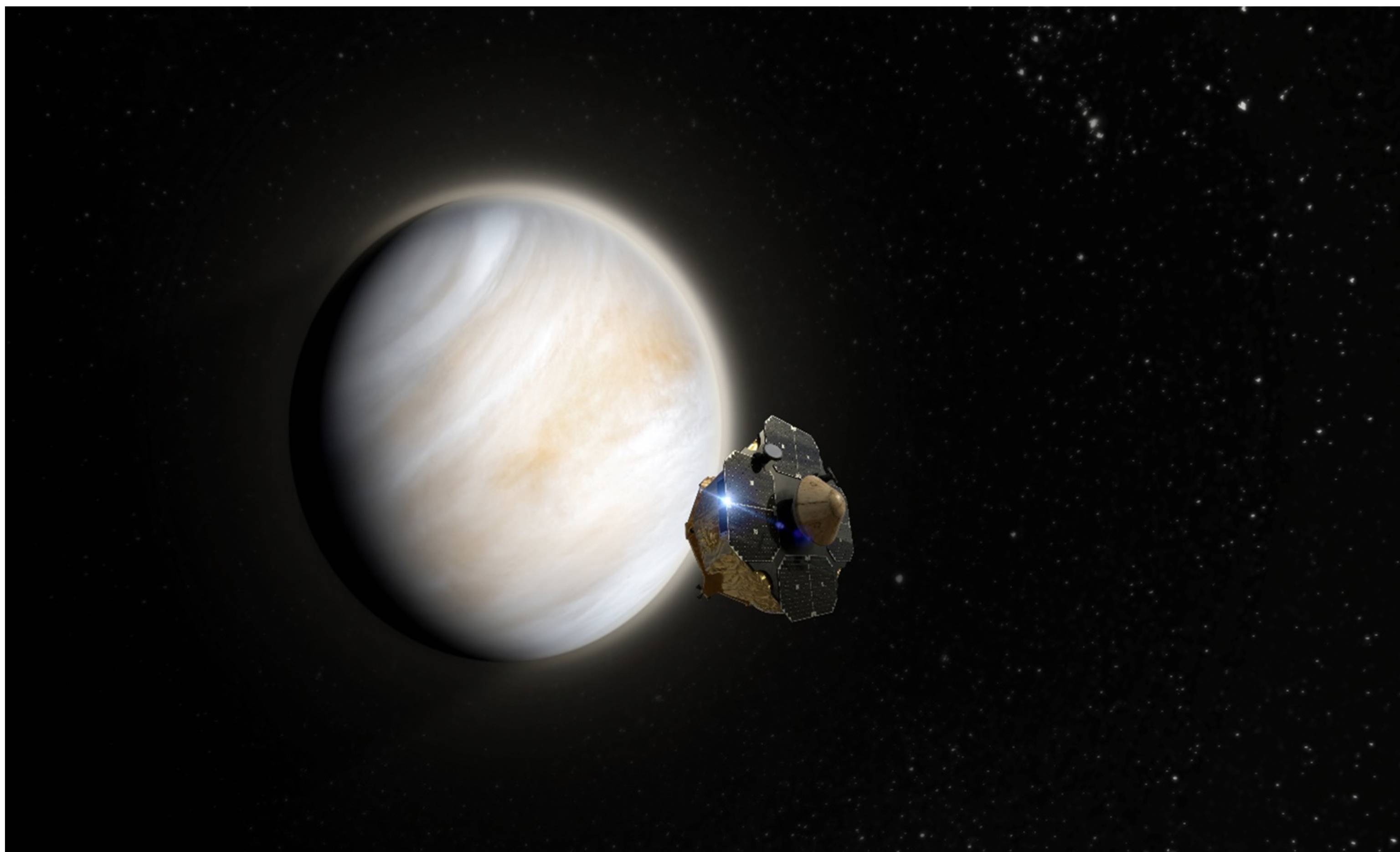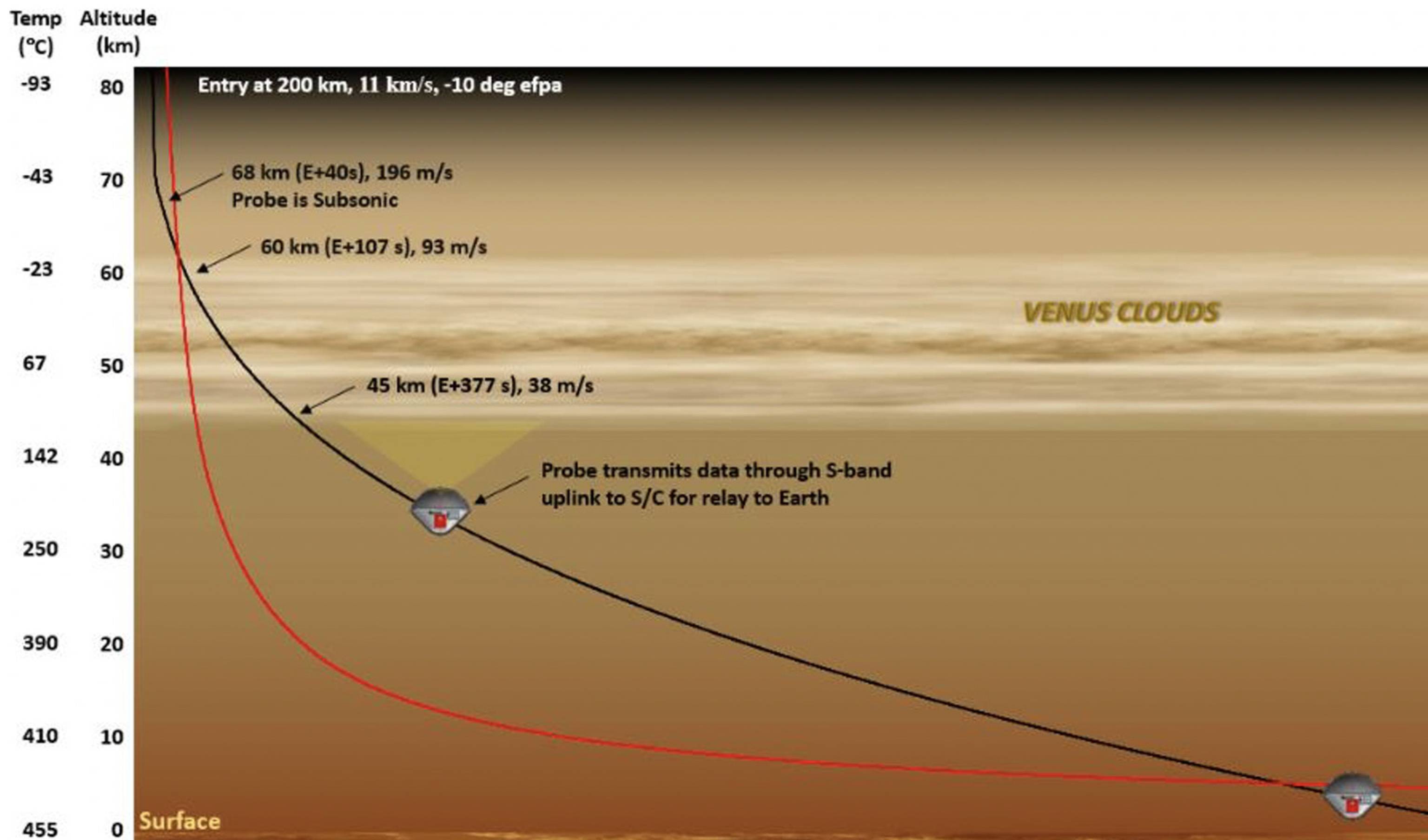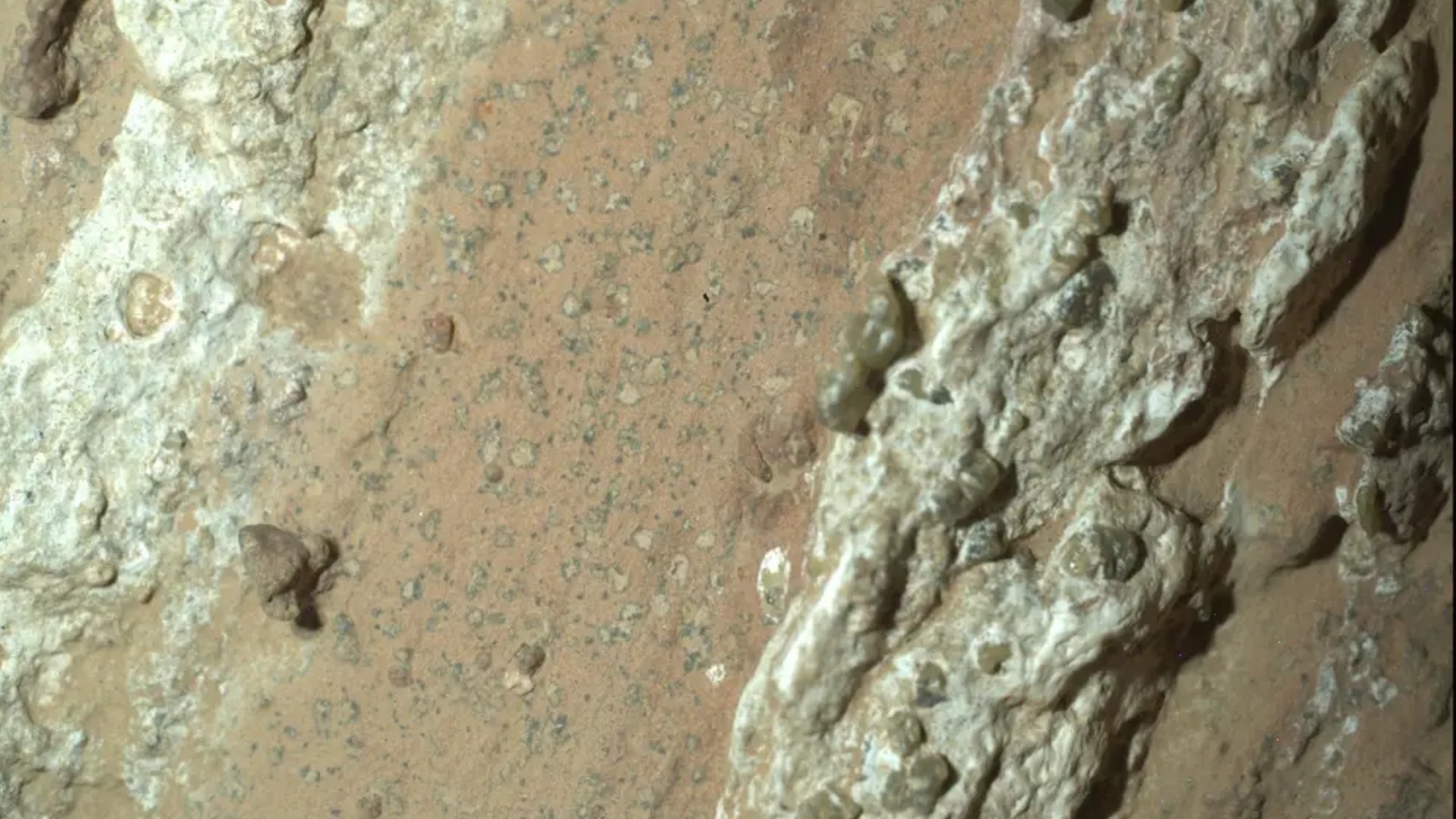Rocket Lab planning to launch private Venus mission in May 2023

A new paper provides details of the ambitious mission.

Most people know Venus as a scorching-hot hellscape, a planet ravaged by a runaway greenhouse effect.
But the second rock from the sun is getting more and more attention these days as a possible abode for alien life, both past and present. Scientists are now planning out missions that could cough up new information about Venus' habitability — and perhaps even find signs of life in the planet's thick clouds.
In September 2020, researchers at the Massachusetts Institute of Technology (MIT) and Wales' Cardiff University announced that they had spotted phosphine in Venus' atmosphere. The find drew a great deal of attention because, here on Earth, phosphine is typically produced by living organisms. However, the Venus phosphine claim remains controversial and contested.
Several studies are underway to further judge the habitability of Venus. Researchers are even considering mounting a mission to haul samples from the planet's atmosphere back to Earth.
Related: Venus' clouds join shortlist for potential signs of life in our solar system
Entrepreneurial energy
Not all of the coming Venus missions will be mounted by NASA or other national space agencies. For example, California-based company Rocket Lab is working to send a probe to Venus soon using its Electron booster and Photon spacecraft bus.
Team members lay out the architecture for this private mission in a newly released paper in the journal Aerospace. The plan is to launch a small atmospheric probe toward Venus in May 2023, with a backup window available in January 2025.
Breaking space news, the latest updates on rocket launches, skywatching events and more!
The probe can accommodate a single, roughly 2-pound (1 kilogram) instrument, according to the paper. The craft will be able to spend about five minutes in the Venus clouds at an altitude of 30 miles to 37 miles (48 to 60 kilometers), where temperatures are relatively Earth-like.
The probe will hunt for carbon-containing organic molecules — the building blocks of life as we know it — in the clouds using a low-mass, low-cost autofluorescing nephelometer.
That instrument will shine a laser out of the probe's window onto cloud particles, causing any complex molecules within them to light up, or fluoresce. Many organic molecules, such as the amino acid tryptophan, have fluorescent properties.

Powerful demonstration
Space.com reached out to Richard French, Rocket Lab's director of space systems business development and strategy, for the latest.
"Photon is unlocking a broad range of new missions near Earth and in deep space," French told Space.com. Rocket Lab's recent launch of NASA's CAPSTONE mission to the moon using Electron and Photon "was a powerful demonstration of our spacecraft's capabilities," he added.
French said that Rocket Lab is already applying lessons learned on CAPSTONE to improve the two Photons that will help get NASA's ESCAPADE mission to Mars. The company is seeing increased interest from both the government and private sector for deep-space Photon missions, including to regions around the moon, he added.
"Our low-cost mission to Venus is a perfect example of what is now possible," French told Space.com. (Electron-Photon missions to the moon and other deep-space destinations such as Venus can likely be mounted for $10 million to $20 million, Rocket Lab representatives have said.)
Related: Photos of Venus, the mysterious planet next door
Clear or cloudy hypothesis?
The coming mission, low-cost though it may be, has the potential to shed considerable light on Venus' current habitability, French said.
"It is an ambitious mission with a clear hypothesis: there is no life without organic chemistry. Any detection of organic chemistry makes the presence of life more likely," French said. "We have a world-class science team that has found a small instrument capable of indicating organic molecules through excitation by an ultraviolet laser."
The private mission will also gather other data — for example, measuring the sizes and shapes of cloud particles as a function of altitude. Such information will build upon the observations made by NASA's Pioneer Venus Project atmospheric probes, which briefly studied the planet's air in 1978.
"It's the first opportunity to probe the Venus clouds directly in nearly four decades," French said. "So, whatever we learn will be a step forward. The beauty of an affordable approach like this is we hope it is just the first of many to gather more data, iterating on science objectives with higher-cadence planetary missions."
Breakthrough science
As the new paper explains, "even with the mass and data rate constraints and the limited time in the Venus atmosphere, breakthrough science is possible."
The Rocket Lab mission aims chiefly to hunt for evidence of life or habitability in the Venusian clouds. That comes down to a search for the presence of organic molecules within cloud-layer particles and determining the shape and indices of refraction of those cloud particles.
Sara Seager, a professor in MIT's Department of Earth, Atmospheric and Planetary Sciences, is a key member of the Rocket Lab Venus mission team. She and her colleagues see great promise in the coming mission, no matter what it finds.
"We hope this is the start of a new paradigm where you go cheaply, more often, and in a more focused way," Seager said in an MIT press statement last year.
Leonard David is author of the book "Moon Rush: The New Space Race," published by National Geographic in May 2019. A longtime writer for Space.com, David has been reporting on the space industry for more than five decades. Follow us on Twitter @Spacedotcom or on Facebook.

Leonard David is an award-winning space journalist who has been reporting on space activities for more than 50 years. Currently writing as Space.com's Space Insider Columnist among his other projects, Leonard has authored numerous books on space exploration, Mars missions and more, with his latest being "Moon Rush: The New Space Race" published in 2019 by National Geographic. He also wrote "Mars: Our Future on the Red Planet" released in 2016 by National Geographic. Leonard has served as a correspondent for SpaceNews, Scientific American and Aerospace America for the AIAA. He has received many awards, including the first Ordway Award for Sustained Excellence in Spaceflight History in 2015 at the AAS Wernher von Braun Memorial Symposium. You can find out Leonard's latest project at his website and on Twitter.
